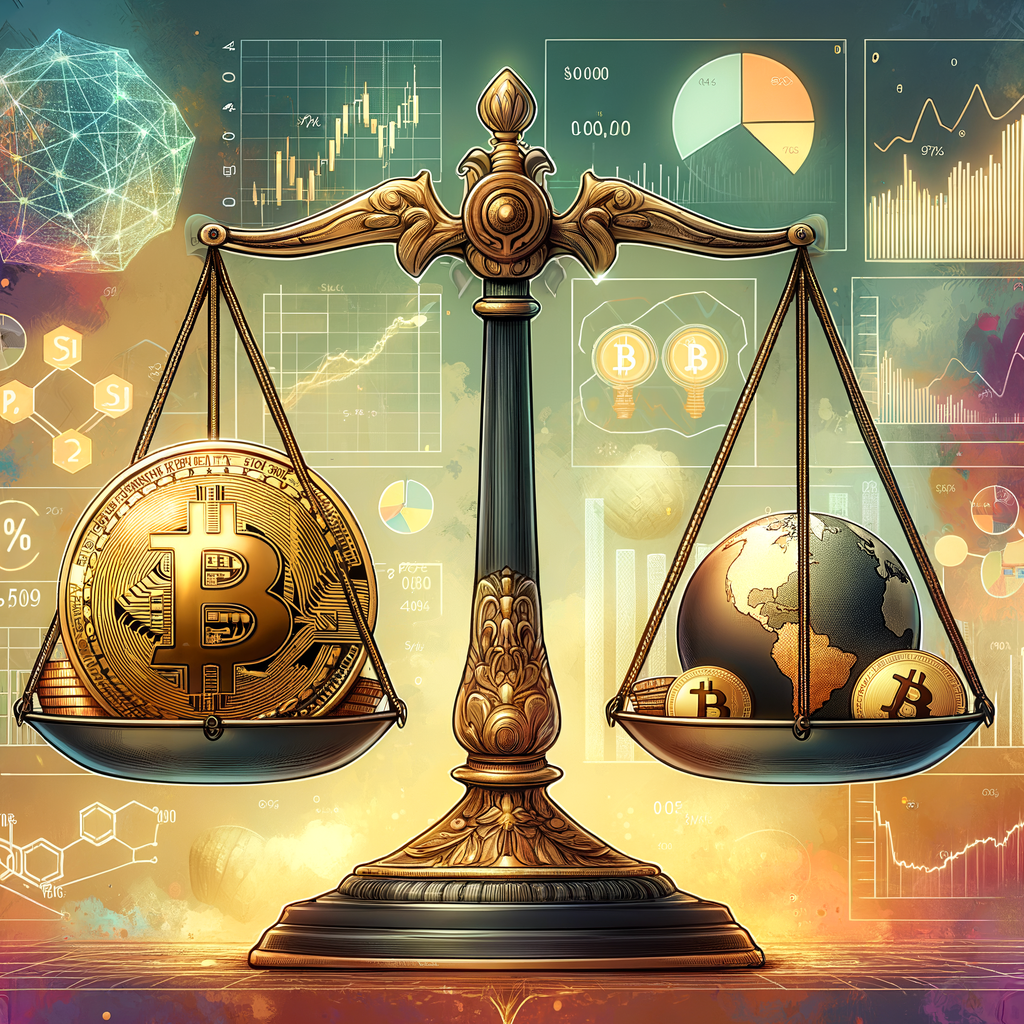What is the fair value of Bitcoin?
By Alexander Bechtel
The debate about the fair value of Bitcoin is polarizing the financial world. While critics dismiss the cryptocurrency as a worthless object of speculation, the number of supporters is growing – also in traditional financial circles.
The debate about the fair value of Bitcoin is often conducted with great passion and polarizes the financial world like no other topic. Bitcoin critics often argue along the lines of the “Greater Fool Theory”. They assume that investors are merely speculating on reselling their bitcoins at a higher price to a “greater fool” instead of believing in the intrinsic value of the cryptocurrency. Despite the skepticism of Bitcoin critics, Bitcoin’s track record of more than fifteen years is impressive, albeit volatile. At the beginning of the year, the first Bitcoin ETF was approved in the USA, whereupon the price reached a new high of around 67,000 euros.
The discussion about the fair value of assets is at least as old as economics itself. A limited supply is crucial for the creation of value. If demand exceeds this limited supply, the result is a positive price. In order to determine whether this price reflects real value, the motivation behind the demand must be examined: Is it purely speculation-driven in the sense of the “Greater Fool” theory and the price therefore merely an expression of a bubble? Or are there also fundamental reasons for the demand, which would indicate an actual value of the asset?
Bitcoin fulfills the condition of scarce supply, as the Bitcoin money supply is limited to 21 million units. In order to determine whether Bitcoin not only has a positive price but also an inherent value, it is necessary to analyze the driving forces behind demand. Undoubtedly, the speculative motive often cited by critics plays a significant role. However, there are two other relevant factors that influence the demand for Bitcoin: Firstly, real economic use cases resulting from the use of the Bitcoin blockchain as a decentralized database. Secondly, the use of Bitcoin as a means of payment and store of value, which is based on trust in the properties of the cryptocurrency and the underlying blockchain.

“Bitcoin is digital, decentralized and scarce – a combination that no other asset offered before.”
Real economic use cases: Demand arises from the use of the Bitcoin blockchain as a decentralized database. Protocols such as ordinals and runes enable the storage and transfer of digital collectibles. In addition, the Bitcoin blockchain can be used as a tool for time-stamping digital documents, primarily due to its immutability. This fundamental, real economy-based demand is comparable to the industrial demand for gold. The resulting value is often referred to as intrinsic value.
Monetary premium: In addition to the intrinsic value from industrial use, assets that serve as a means of payment and store of value often also have a monetary premium. This premium results from trust in the corresponding money (system) and the resulting network effects. Confidence in today’s fiat money is based on the fact that central banks, and therefore governments, support this money with their economic strength. However, as with gold, trust can also develop and consolidate naturally over centuries.
Assets with a monetary premium are usually characterized by good divisibility, transportability, durability and fungibility – characteristics that Bitcoin, like gold, possesses. Historically, there have been many other assets with a monetary premium, including cigarettes, shells and even stones. One example is the Rai stones on the Yap Islands in the Western Pacific, which were used as money for centuries. They had no industrial value whatsoever, but nevertheless carried a monetary premium. This depended on the size, shape and production cost of the stones. However, with modern tools and ships from the 19th century onwards, production and therefore the supply of stones increased dramatically. The Rai stones fell victim to inflation.
Bitcoin is protected from inflation due to its limited money supply. However, the demand for Bitcoin and therefore the monetary premium is currently still subject to strong fluctuations. This is due to the significant influence of speculators and the fact that Bitcoin does not yet enjoy the trust that has been built up over centuries in the case of gold. Against this backdrop, it is understandable and sensible to treat Bitcoin with a healthy dose of skepticism. The cryptocurrency remains a risky asset and success is not guaranteed. However, the statement that the fair value of Bitcoin is zero cannot be substantiated either empirically or theoretically.
From an empirical perspective, the market capitalization of Bitcoin is currently around 1.2 trillion euros, which is roughly the size of Meta (formerly Facebook). Bitcoin has therefore been one of the largest assets in the world for several years now.
From a theoretical perspective, it is understandable that an asset with Bitcoin’s properties has a monetary premium. Not only is it divisible, transportable, durable and fungible, it is also the first asset that is simultaneously digital, decentralized and scarce – a combination that no other asset offered before Bitcoin and which has only been made possible by the development of a completely new database technology called blockchain.
It is these unique characteristics, as well as the network effects that have been intensifying for 15 years, that make Bitcoin an asset to be taken seriously. Bitcoin is currently in a phase of monetization and therefore entails both risk and growth potential.
—
This article was originally published in Frankfurter Allgemeine Zeitung (FAZ) in German. For the original version, click here.
Disclaimer: The author of this article is employed by DWS. The contents of the article reflect private opinions of the author and not directly those of DWS.
